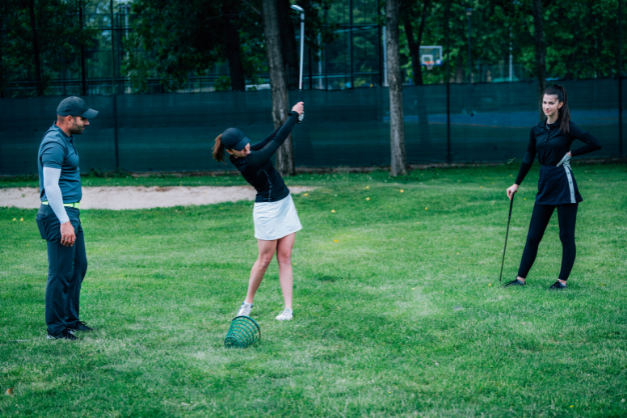Read up before you tee up your recruiting
If you’re considering pursuing a college scholarship for women’s golf, there are several things to know before you begin the recruiting process. Overall, the golf recruiting process is notably smaller in scope when compared to college football or basketball. However, while women’s golf is a smaller sport at the collegiate level, at 15 to 1, your odds of making a college roster are about the same as a basketball player. Beyond that, if you want to be part of the roughly 6.5% of women’s high school golfers who go on to play in college, you should also be aware of a few other things too.
Full Ride Scholarships May Be Rare
At the NCAA Division I and II levels, women’s golf is an equivalency sport, which means most teams have more players on the roster than scholarships. It also means you may not be able to earn a full-ride scholarship if you’re not an elite player.
While it varies from coach to coach and team to team, in many cases, a women’s college golf coach will try to award partial scholarships to more players on the roster. For example, while the average DI women’s team roster has eight players, coaches only have the equivalent of six scholarships to award. When distributed evenly, every player on the team could be awarded a scholarship covering 75% of their tuition and fees. However, if a coach does award a full ride to one or two players, then the pie gets smaller for the other members of the team. Finally, remember too that not every women’s college golf program is fully funded and that can affect how much of a scholarship you might earn at a given school as well.
You Need To Be Ready
In most cases, college coaches look for high school recruits who can step up, play immediately, and be a competitive asset to their team. Generally, if you’ve been competitive at the district, regional, and state levels, you can likely compete at the collegiate level. If your game is still developing, your scholarship potential may be limited.
While a good way to assess your abilities is to compare your scores with players on a current college roster, remember to focus on the top four golfers on each team. That’s because only the top five golfers on a team travel to tournaments and only the top four compete. For a reasonable gauge on how you might measure up, make sure you’re comparing your scores to the top four team members. And, as college course setups are usually longer and more difficult, you might also add three strokes to your average to make a more accurate assessment of where you stand.
One Size Does Not Fit All
As mentioned above, the 270 women’s golf teams in Division I have an average roster of eighth players, but a limit of six equivalent scholarships. In Division II, there are 198 women’s golf programs averaging eight players per team, but the equivalent scholarship limit is 5.4. But, if you’re not getting much interest from DI or DII coaches, you still have options to find the school, and program that fits you.
There are 171 women’s golf teams in the NAIA, each with an average roster of seven players and the equivalent of five scholarships. And, while the 95 junior college women’s golf teams only have an average of three players on the roster, each program can award up to eight scholarships. And, though many believe the competition level might be lower in the NAIA or at a junior college, remember that you’ll still likely be competing against the top 5% of women’s players in the country.
With all that said, your best opportunity to play golf in college might be in NCAA Division III, which has 248 schools sponsoring women’s golf, each with an average roster of seven players. But, the catch is, DIII schools don’t offer athletic scholarships. Many do offer many academic scholarship opportunities, however. And that means…
Academics Are Still Important
If you’re among the majority of women’s golf recruits that likely won’t be offered a full-ride college scholarship, it’s hugely important to have good grades in high school and solid standardized test scores. In fact, a solid academic record is also important even if you do receive a full scholarship.
That’s because, besides making you eligible for academic scholarships at DIII schools, good grades assure college golf coaches you can handle a college course load. Plus, being eligible for academic scholarships may allow you to cover some of the expenses that a partial academic scholarship doesn’t. And that allows coaches to assemble academic and athletic scholarship packages, which may also allow them to stretch their scholarship budget further. Add it all up and your classwork, when combined with your talents on the course, can make you an even more attractive recruit to college golf coaches.
Did you enjoy the article ‘What You Need To Know About Women’s Golf Recruiting’? If so, check out more of our articles HERE.






